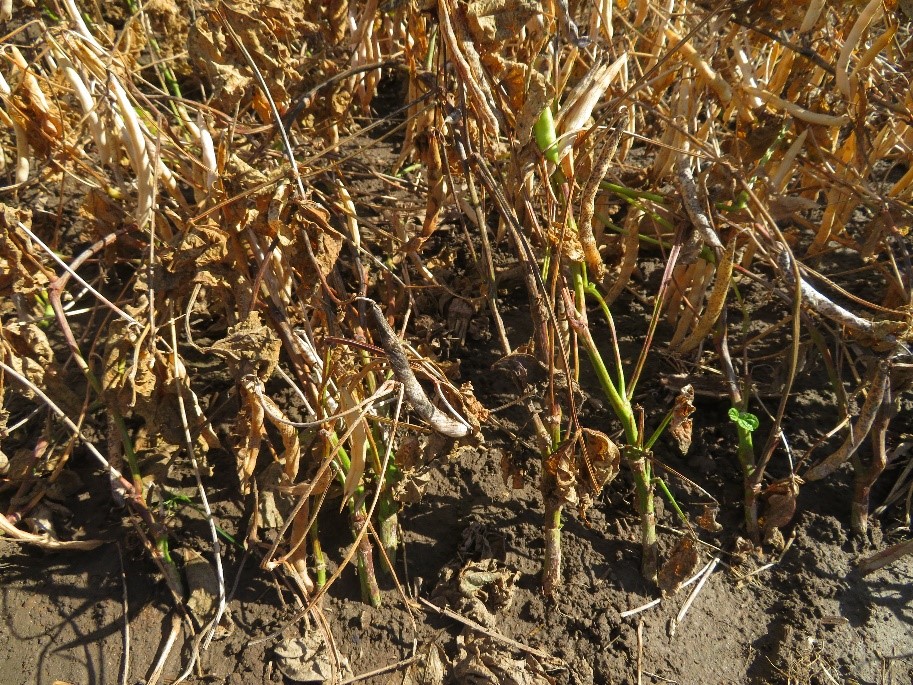Western Bean Cutworm Update
The Midwest is alive with WBC moths. Moths have been captured this year much earlier and in higher numbers in Michigan, Ohio, Ontario and Pennsylvania. Current Trap Catch Maps are available at: Ontario Michigan Ohio This increases our risk of having eggs laid in corn, since corn was planted so early this year and is […]
Soybean Aphids and Western Bean Cutworm Are Here
Our first weekly soybean aphid scouting map is now available. Click on the link below to see it. Ontario Soybean Aphid Scouting Map for Week of June 14th 2010 So far, no aphids have been found at our sites though I am aware of soybean fields near Palmyra and Ottawa with soybean aphids in them. […]
Latest Distribution Map for Western Bean Cutworm
Just wrote an article and completed the map of the distribution of western bean cutworm in the Great Lakes Region. Check it out in the latest CropPest Newsletter at: http://www.omafra.gov.on.ca/english/crops/field/news/croppest/2009/18cpo09a3.htm . […]
More Western Bean Cutworm Damage Sightings to Add to the List
More reports of WBC damage are coming in. Here is an updated list of sites with damage and or larvae found in Ontario: Chatham- Kent (Dover Centre, Bothwell) Lambton (Petrolia) Middlesex (Wardsville, Appin, Glencoe) Elgin (Rodney) Huron (Blyth, Clinton, Exeter, Dashwood, Holmesville, Belgrave) Bruce (Walkerton, Kincardine) Simcoe (Alliston, Barrie, Stayner) Durham (Kinsale, Lindsay, Brooklin) Victoria […]
More Western Bean Cutworm Damage Being Found
We visited the Newbury WBC site last week and it was concerning to see so many plants infested with WBC larvae. There were no external entry holes from the outside of the ear which could fool those who think the ears are clean. Pay extra attention to those ears that are slightly opened at the ear tip (husk […]
First Western Bean Cutworm Larvae Found in Ontario
My summer students are going to be frustrated when they find this out, especially with all of the scouting they have done looking for WBC egg masses and larvae and finding nothing to show for it. But today Adam Pfeffer of Monsanto brought in the first WBC larvae found here in Ontario. The larvae was from […]
Western Bean Cutworm Levels High in Michigan
Some counties in Michigan have been given the recommendation to spray their dry beans due to the high moth counts and observations of pod feeding at some locations. Montcalm County (central Michigan) in particular is at the highest risk with some trap sites capturing over 400-500 moths in the last few weeks. Isabella, Gratiot and Mecosta counties are also considered […]
Spidermites, Aphids and Western Bean Cutworm
SPIDERMITES: I have a sneaking suspicion that spidermites are making their way into those fields that haven’t had rain in a while. We have had situations in the past where not only have they popped up in soybeans and were being disregarded as “drought stress” symptoms but also in seed corn, especially around or just after […]
Western Bean Cutworm Adults Captured in Michigan and Ohio
Traps were just going up last week but already both Michigan and Ohio have caught their first WBC moth of the season. Traps also went up last week in Ontario and our trap participants will be sending in their results this week. We will be updating our trap captures each week via maps. Ontario WBC Trap Maps will be available […]
2022 Dry Bean Seasonal Summary

Total acreage of dry beans insured by Agricorp in 2022 was 101,901 acres (see Table 1.). The number of insured acres has slowly declinedfrom the 2020 high, when acres were the highest Ontario has experienced since 2007. Most market classes declined in 2022, except Adzuki Beans which saw a slight increase. Overall, 2022 acreage is […]
2021 Dry Bean Seasonal Summary

Acreage, Planting and Harvest In 2020, Ontario dry bean acres were at their highest since 2007. This year, insured acres of dry beans totalled around 115,000 which is comparable to the 10-year average. Acreage of each market class declined in 2021, although the decrease in kidney bean acres was relatively small. Dry BeanMarket Class 2021Insured […]
2020 Dry Edible Bean Seasonal Summary

Acreage of dry beans increased approximately 20% over 2019, and 50% over 2018. Total acreage of dry beans insured by Agricorp in 2020 was 157,610 acres (Table 1). There were more acres of all market classes compared to last year, except for cranberry beans. Table 1. Acres of dry edible beans insured by Agricorp in […]
2019 Dry Edible Bean Seasonal Summary

(This article updated on March 5, 2019 with yield data from Agricorp. See table at end of article) Planting and Growing Conditions Acreage of dry beans in 2019 increased approximately 20% over 2018 acreage, with notable growth in acres of white and adzuki beans. Challenging planting conditions for corn and soybeans were likely a factor […]
Edible Bean Seasonal Summary 2018
Planting and Development The dry edible bean season started out positively with good planting conditions at the end of May and beginning of June. There was not much rain in the last half of May, and by May 28th temperatures were reaching 30˚C with no risk of frost. A large proportion of the dry beans […]
Tarnished Plant Bugs in Dry Edible Beans
This is a year of Stranger Things. Some insect pests that are expected in these conditions haven’t shown up yet while others are much more ahead of schedule, thanks to the hot days that are resulting in significant growing degree day accumulation. Tarnished plant bug is already being found in dry beans, even though the […]